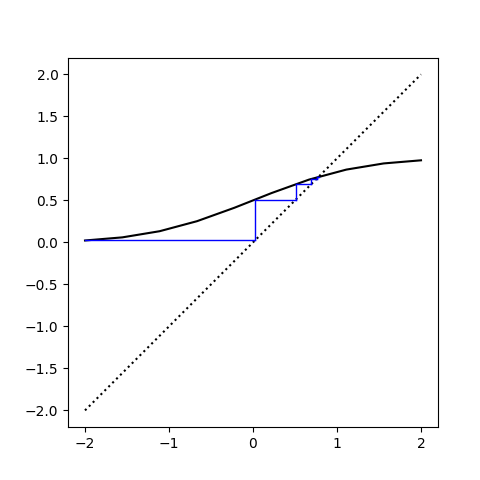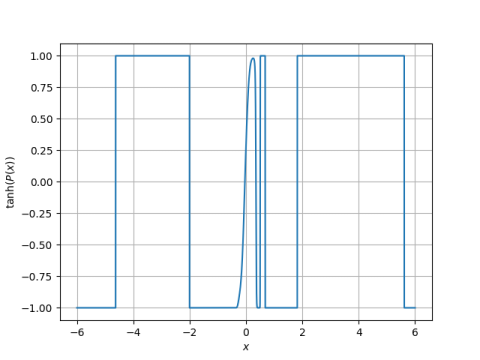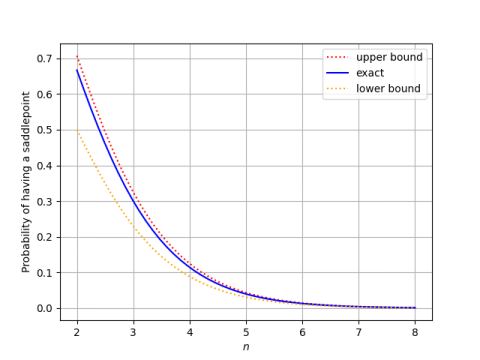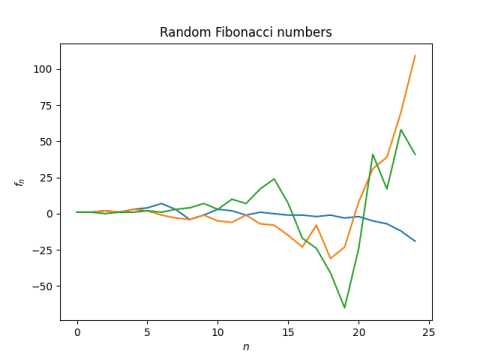If you want to determine whether
a/b > c/d,
it is often enough to test whether
a + d > b + c.
Said another way a/b is usually greater than c/d when a + d is greater than b + c.
This sounds imprecise if not crazy. But it is easy to make precise and [1] shows that it is true.
Examples
Consider 4/11 vs 3/7. In this case 4 + 7 = 11 < 11 + 3 = 14, which suggests 4/11 < 3/7, which is correct.
But the rule of thumb can lead you astray. For example, suppose you want to compare 3/7 and 2/5. We have 3 + 5 = 8 < 7 + 2 = 9, but 3/7 > 2/5.
The claim isn’t that the rule always works; clearly it doesn’t. The claim is that it usually works, in a sense that will be made precise in the next section.
Rigorous statement
Let N be a large integer, and pick integers a, b, c, and d at random uniformly between 1 and N. Let
x = a/b − c/d
and
y = (a+d) − (b+c).
Then the probability x and y are both positive, or both negative, or both zero, approaches 11/12 as N goes to infinity.
Simulation
I won’t repeat the proof of the theorem above; see [1] for that. But I’ll give a simulation that illustrates the theorem.
import numpy as np
np.random.seed(20210225)
N = 1_000_000
numreps = 10_000
count = 0
for _ in range(numreps):
(a, b, c, d) = np.random.randint(1, N+1, 4, dtype=np.int64)
x = a*d - b*c
y = (a+d) - (b+c)
if np.sign(x) == np.sign(y):
count += 1
print(count/numreps)
This prints 0.9176, and 11/12 = 0.91666….
The random number generator randint defaults to 32-bit integers, but this could lead to overflow since 106 × 106 > 232. So I used 64-bit integers.
Instead of computing a/b − c/d, I multiply by bd and compute ad − bc instead because this avoids any possible floating point issues.
In case you’re not familiar with the sign function, it returns 1 for positive numbers, 0 for 0, and −1 for negative numbers.
The code suggests a different statement of the theorem: if you generate two pairs of integers, their sums and their products are probably ordered the same way.
Psychology
This post has assumed that the numbers a, b, c, and d are all chosen uniformly at random. But the components of the fractions for which you have any doubt whether a/b is greater or less than c/d are not uniformly distributed. For example, consider 17/81 versus 64/38. Clearly the former is less than 1 and the latter is greater than 1.
It would be interesting to try to assess how often the rule of thumb presented here is correct in practice. You might try to come up with a model for the kinds of fractions people can’t compare instantly, such as proper fractions that have similar size.
Related posts
[1] Kenzi Odani. A Rough-and-Ready Rule for Fractions. The Mathematical Gazette, Vol. 82, No. 493 (Mar., 1998), pp. 107-109





